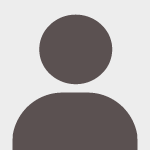Picture this. As far as you can see, there's snow. Pristine, crisp perfect snow, only broken by the marks made by husky sleds and reindeer sleds. The light is incredible, fresh and crystal clear, and you can see for miles and miles. You're scudding along with the sound of snow crystals tinkling as you speed ahead. The sun's shining, the sky is an awesome pale blue, and the air is so fresh you could almost cut it with a sharp knife. You're exhilarated, your companions are thrilled to bits, and this is an experience you are not going to forget. You might even spot a herd of reindeer...
If cross-country skiing isn't on your bucket list yet, it's time to add it. If a visit to the Arctic Circle and beyond is on your horizon, make it so. This is one of the most unusual, powerful and inhospitable places on earth, but it's also extremely, eye-wateringly beautiful. And seeing it flash past your eyes as you ski cross-country is totally unforgettable. How much fun is cross-country skiing? It's this fun – read on for inspiration!
_w=1240_h=500_pjpg.jpg?v=202509161525)
Is cross-country skiing easier than downhill skiing?
Cross-country skiers are into interesting adventures enjoyed in a relaxed way, while downhill skiing is all about speed and the adrenaline rush. Cross-country is usually safer than downhill, as you can imagine, simply because you don't reach those crazy, dizzying downhill speeds you achieve on the slopes.
In a way, cross-country skiing is easier than downhill skiing. You're lovely and warm, for a start, because you're using up a lot of energy and constantly moving rather than crouching low, moving at high speed downhill, with a wind chill factor to deal with.
What is the difference between cross-country and downhill skis?
The kit is a bit different. Downhill skis are designed to handle speed, so are more stable and easier to control. Cross-country skis are designed to let you move up, down and around a wide variety of terrains. Only the toe of your boot attaches to cross-country skis, leaving your heels free to help you go uphill more efficiently. Downhill skis, however, have an entire boot attached to each ski, giving you essential stability on fast downhill runs.
Cross-country skis are narrower, lighter and straighter than downhill ones. Your choice depends on your weight, your level of ability, and the kind of terrain you'll be exploring. And that's why cross-country skis come in various widths, with narrower versions being best for clear, well-maintained runs and wider ones best for more rugged trails and powdery snow.
How easy is cross-country skiing to learn?
Cross-country skiing is relatively easy to learn, and absolute beginners will soon be out there exploring. An experienced instructor – important if you haven't done it before – will show you the techniques for starting off, gliding, braking and falling safely, and most people only need to be shown a few times before they get the hang of it.
There are two main techniques to get under your belt: classic and skate skiing, sometimes also called free skiing. Classic skiing involves sticking to parallel tracks cut into the snow, striding forward a lot like walking, and using poles for balance and extra power. Free skiing means moving rather like an ice skater, moving your weight from one ski to the other, moving your skis outwards diagonally. For this you need a specialist skate ski or something called a combi-ski, which you can use for both techniques.
Cross-country ski trails are often narrow, icy and rutted, used by your fellow skiers whose skis naturally shove the snow around and pile it up at the edges of the trails as they go, and that can be a bit of a challenge. But once you've got the technique, your confidence should grow fast.
What should I wear for cross-country skiing?
Remember the Three Bears? Just like their porridge, you don't want your cross-country ski clothing to be too hot or too cold. It needs to be 'just right', and that means getting clever with layers. Breathable sportswear, windproof outerwear and fleeces are all perfect, worn on top of proper thermal long johns, not cotton because it absorbs moisture and leaves you chilled.
Don't go too baggy. Your clothes should fit well without being tight, including your gloves. Bring an extra jumper in case you get chilly on a rest break, a flask of something warm to sustain you and high-energy snacks. If you take an official cross-country experience with a holiday provider, they'll probably provide a lot of the things you need.
Tips and information
Here are a few more things to remember when you go cross-country skiing in Lapland:
- People will tell you how cold it is in Lapland. But you won't really understand exactly how cold it is until you get there. It's incredibly cold, but with the right clothes you won't mind a bit.
- Bear in mind the sun is powerful and you'll probably need sunscreen even if it feels really cold.
- If you want to cross-country ski and feel you're unfit, it might be sensible to prepare yourself with some hiking, strength training and cardiovascular exercises before you go.
- Take careful note of the safety tips your instructor gives you, and remember all the 'rules of the road' for skiing cross country.
- It's easy to dehydrate, which also makes you feel colder. Drink plenty of fluids along the way.
- Warm up beforehand and cool down properly afterward to help prevent sore muscles.
_w=1240_h=500_pjpg.jpg?v=202509161525)
Ready to go?
If you'd love to experience the sheer, unadulterated joy of cross-country skiing way up north above the Arctic Circle, and maybe even see the Northern Lights for yourself, we have plenty of brilliant opportunities for you.
See about adding a cross-country skiing excursion to your Lapland holiday here
Originally published 14 May 2019, updated 26 February 2024
